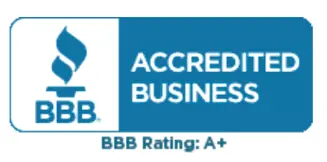-
ACETAMINOPHEN; CAFFEINE (a set a MEE noe fen; KAF een) treats mild aches and pains. It is a combination of acetaminophen and caffeine.
This medicine may be used for other purposes; ask your health care provider or pharmacist if you have questions.
-
Take this medication by mouth with a glass of water. Follow the directions on the product label. Take your medication at regular intervals. Do not take it more often than directed.
Talk to your care team about the use of this medication in children. While this medication may be given to children as young as 12 years for selected conditions, precautions do apply.
Overdosage: If you think you have taken too much of this medicine contact a poison control center or emergency room at once.
NOTE: This medicine is only for you. Do not share this medicine with others.
-
-Certain medications that prevent and treat blood clots like warfarin
This list may not describe all possible interactions. Give your health care provider a list of all the medicines, herbs, non-prescription drugs, or dietary supplements you use. Also tell them if you smoke, drink alcohol, or use illegal drugs. Some items may interact with your medicine.
-
Visit your care team for regular checks on your progress. Tell your care team if your symptoms do not start to get better or if they get worse.
Do not take other medications that contain acetaminophen with this medication. Many non-prescription medications contain acetaminophen. Always read labels carefully. If you have questions, ask your care team.
If you take too much acetaminophen, get medical help right away. Too much acetaminophen can be very dangerous and cause liver damage. Even if you do not have symptoms, it is important to get help right away.
Do not take this medication close to bedtime. It may prevent you from sleeping.
-
This does not apply. This medicine is not for regular use. It should only be used as needed.
-
Side effects that you should report to your care team as soon as possible:
-Allergic reactions—skin rash, itching, hives, swelling of the face, lips, tongue, or throat
-Liver injury—right upper belly pain, loss of appetite, nausea, light-colored stool, dark yellow or brown urine, yellowing skin or eyes, unusual weakness or fatigue
-Redness, blistering, peeling, or loosening of the skin, including inside the mouth
Side effects that usually to not require medical attention (report to your care team if they continue or are bothersome):
-Anxiety or nervousness
-Headache
-Nausea
-Tremors or shaking
-Trouble sleeping
-Upset stomach
This list may not describe all possible side effects. Call your doctor for medical advice about side effects. You may report side effects to FDA at 1-800-FDA-1088.
-
Keep out of the reach of children and pets.
Store between 20 and 25 degrees C (68 to 77 degrees F). Get rid of any unused medication after the expiration date.
To get rid of medications that are no longer needed or have expired:
-Take the medication to a medication take-back program. Check with your pharmacy or law enforcement to find a location.
-If you cannot return the medication, check the label or package insert to see if the medication should be thrown out in the garbage or flushed down the toilet. If you are not sure, ask your care team. If it is safe to put it in the trash, empty the medication out of the container. Mix the medication with cat litter, dirt, coffee grounds, or other unwanted substance. Seal the mixture in a bag or container. Put it in the trash.
NOTE: This sheet is a summary. It may not cover all possible information. If you have questions about this medicine, talk to your doctor, pharmacist, or health care provider.
DISCLAIMER: This drug information content is provided for informational purposes only and is not intended to be a substitute for professional medical advice, diagnosis, or treatment. Patients should always consult their physician with any questions regarding a medical condition and to obtain medical advice and treatment. Drug information is sourced from GSDD (Gold Standard Drug Database ) provided by Elsevier.
 En Español
En Español

